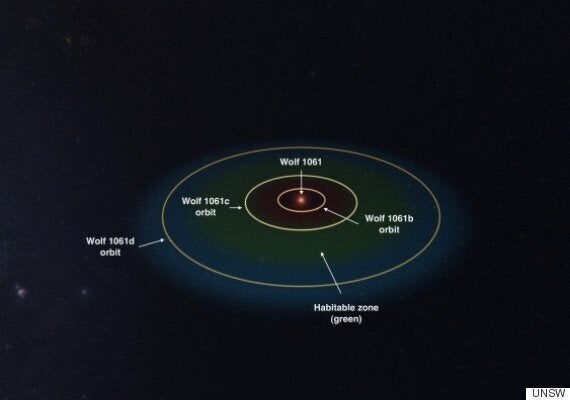The search for our second home may be over.
Scientists have found another potentially habitable planet, 14 light years away.
Dubbed, Wolf 1061c, its most important feature is its proximity to us.
It is more than four times the mass of Earth and it orbits a red dwarf star called Wolf 1061 said the team responsible for the discovery, who are based in the University of New South Wales, Australia.

"It is a particularly exciting find because all three planets are of low enough mass to be potentially rocky and have a solid surface, and the middle planet, Wolf 1061c, sits within the ‘Goldilocks’ zone where it might be possible for liquid water – and maybe even life — to exist,” lead study author Dr. Duncan Wright said.
SEE ALSO:
“It is fascinating to look out at the vastness of space and think a star so very close to us – a near neighbour – could host a habitable planet.
“While a few other planets have been found that orbit stars closer to us than Wolf 1061, those planets are not considered to be remotely habitable,” he added.
Wright and team used the European Southern Observatory’s 3.6 metre telescope in La Silla in Chile and said their latest finding joins a growing group of exoplanets that are potentially habitable.

However, Wolf 1061c is the closet one to us. Most are usually hundreds or thousands of light years away, with the exception of Gliese 667Cc, which is 22 light years away the researchers said.